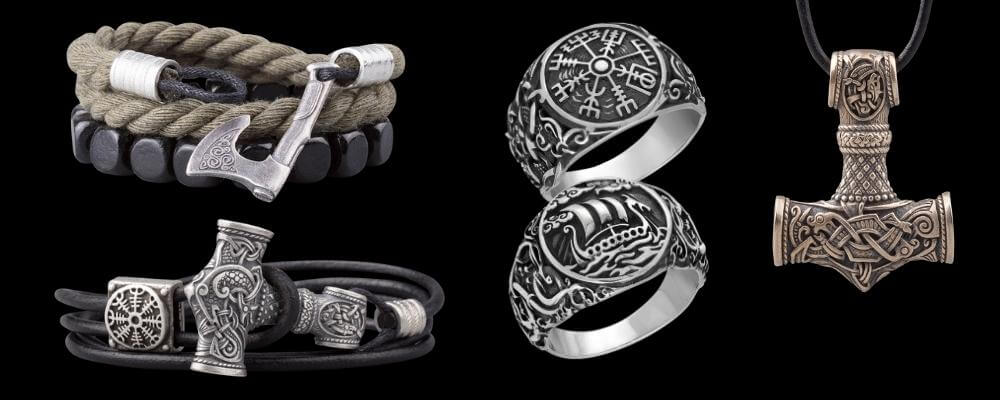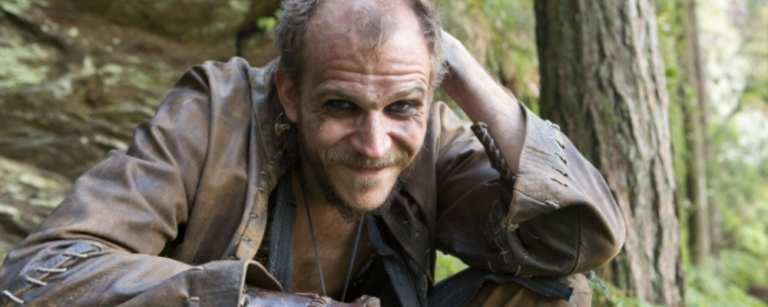Floki, the best friend of Ragnar Lothbrok, is undeniably one of the most popular characters on Vikings. But is the character of Floki based on a real historical figure or just developed for the show?
While the character of Floki is named after the 9th century Viking explorer Hrafna-Floki, on-screen he actually an amalgam of several Vikings, including a number of explorers linked with the discovery of Iceland, as well as Erik the Red, who created the first settlement in Greenland.
The historical part of Floki’s story only seems to emerge in the later seasons after the death of Ragnar, but it is hard to imagine that the show creators didn’t have this in mind from the beginning.
Let’s take a close look at Floki and the real Viking on which his story is based.
Floki on Vikings
On Vikings Floki is played by Gustaf Skarsgard, yes, the brother of Alexander and Bill Skarsgard and another son of Stellen Skarsgard – they are Swedish acting royalty.
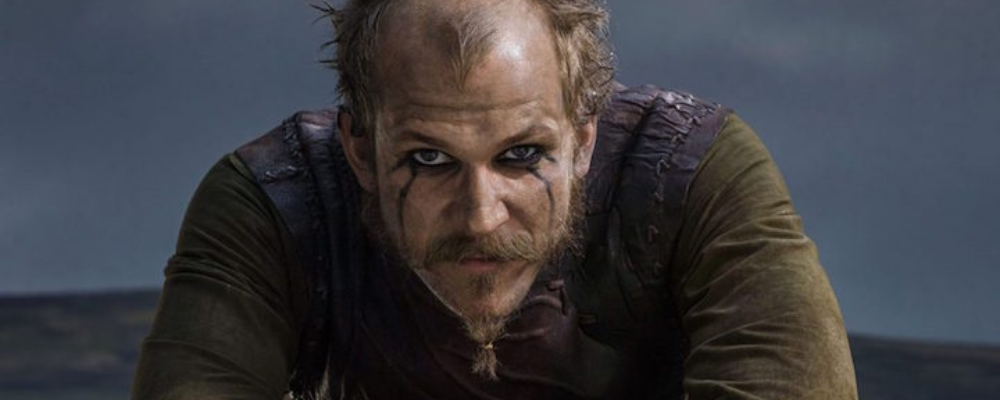
On the show, the main characteristics of Floki are that he is a gifted inventor and builder of ships, who creates the ships that allow Ragnar to sail to England; that he is dedicated to the old religion in the face of Christianity; and that he discovered Iceland and founded a settlement there.
Floki and Loki
Just as Ragnar is said to be descended from Odin, on the show Floki is described as a descendant of Loki, and many of the stories of the god are also used to create Floki’s character and journey.
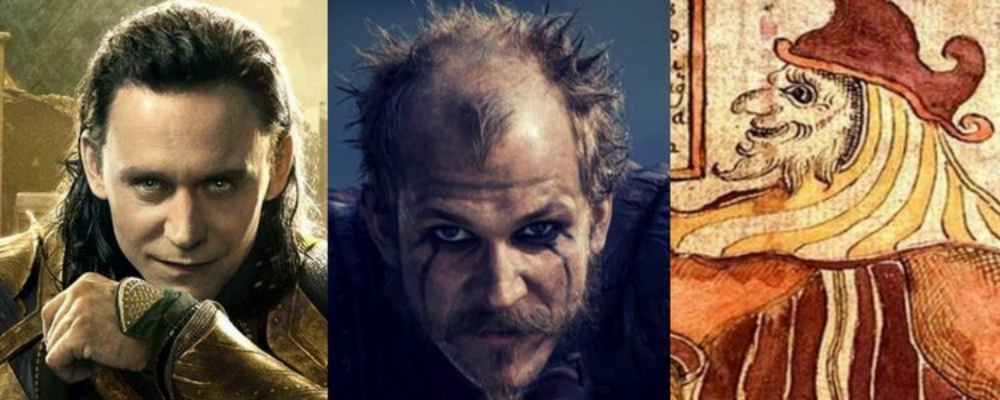
For example, when Ragnar punishes Floki for his role in the death of Athelstan, Ragnar ties him to two rocks and tortures him by letting water from the cave’s roof drip on his head. His wife Helga stays in the cave with him, catching the water to save him from some of the torture.
This is based on the story of the punishment given to Loki for his role in the death of Balder, one of the sons of Odin. Odin has Loki chained between two rocks and a poisonous serpent hung over his head to drip stinging poison onto his head.
Loki’s wife, the goddess Sigyn, stays by his side catching the poison in a dish. Sometimes she has to leave to empty the dish, and the poison hits Loki, giving him painful convulsions that cause earthquakes.
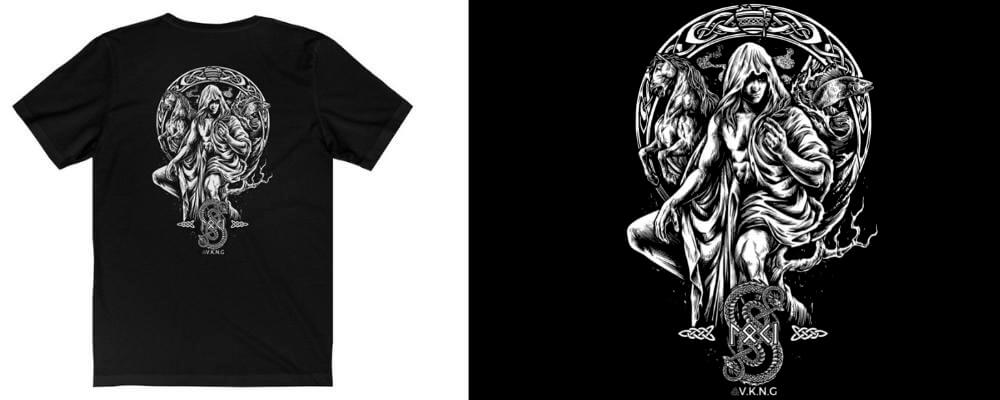
Floki and the Discovery of Iceland
One of Floki’s key storylines on Vikings is his role in the discovery and settlement of Iceland. This makes it clear that the character on the show was named from Hrafna-Loki (Raven-Floki) Vilgerdarson, one of the first Vikings to visit Iceland.
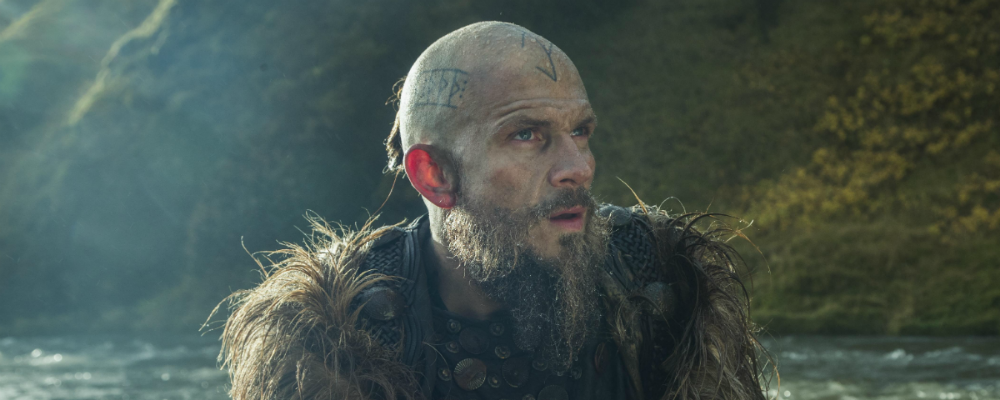
But the story of Floki on the show is actually an amalgam of the stories of several Vikings that discovered Iceland in the 9th century, recorded in the surviving manuscripts Landnámabók, the book of settlement, and Islendingabók, the book of Iceland.
These books actually suggest that the Vikings were not the first to discover Iceland. They record that a group of Christian aesthetic priests known as the paper from Ireland and the Hebrides may have already been living in Iceland seeking isolation. But they are thought to have intelligently departed when the Norsemen began to arrive.
Floki as Discoverer
Hrafna-Floki is not credited with discovering Iceland, but rather as being the first man to deliberately sail there.
Floki’s journey to discover Iceland on Vikings is based on the stories of two earlier men, Naddod and Gadar Svavarsson.
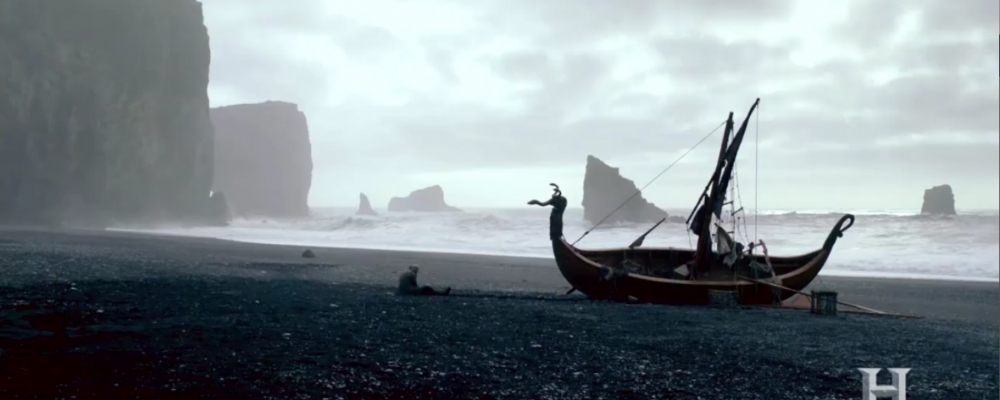
Naddod is said to have been a Viking from Norway who was also one of the earliest settlers of the Faroe Islands, an island cluster that lies pretty much in the center of the sea between Iceland, Norway, and Scotland.
On one of his journeys between Norway and the Faroe Islands, he was blown off course, and found himself on the east coast of Iceland. He explored a little but found no people there, so set off again and eventually reached his original destination. He called the land he visited Snaeland, which means land of snow.
Iceland was again reached by accident by the Danish Vikings Gardar Svavarsson, who was married to a woman from the Hebrides in Scotland. He set off to the Hebrides in order to claim his inheritance, but clearly got blown very far off course as he found himself in Iceland. He too landed on the east coast, but then circumnavigated the landmass, proving that it was an Island.
He seems to have set up a small home for himself on the north coast in a place that he called Husabik, meaning house bay, before leaving the island. He called it Gardarsholmi, naming it after himself.
Floki as Hrafna-Floki
Floki’s namesake Hrafna-Floki heard about Iceland from Gardar Svavarsson and decided to set out for the island.
He went with his wife Gro, two daughters, and three other men named Herjolfr, Faxi, and Thorolf.
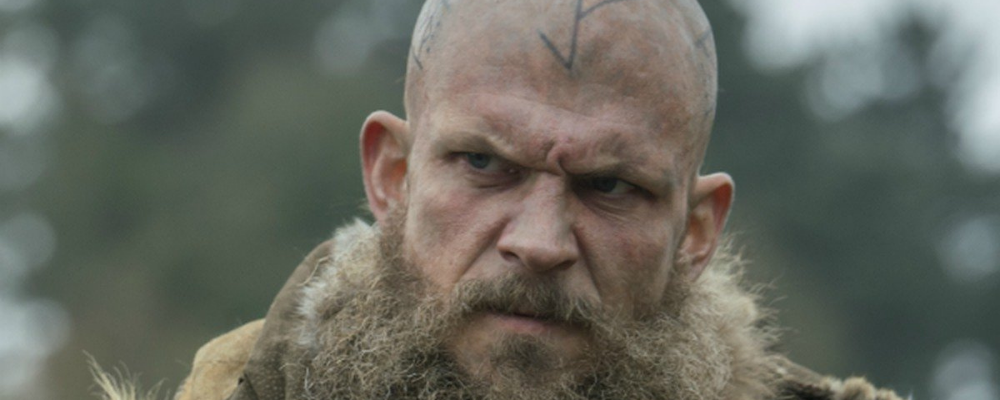
They set off from the Shetland Islands, and began encountering issues from the outset, with one of his daughters drowning. They stopped at the Faroe Islands, where Floki’s other daughter stayed to get married.
There Floki also got three ravens. It was Viking custom to take ravens on sea journeys. When they thought that they were approaching land, they would set a raven free. If there was no land nearby, the raven would return. If there was, the raven would head directly for the land, and the Viking sailors would follow the path of the raven.
Floki set the ravens off three times. The first time it returned to the Faroe Islands, suggesting that the still had a long way to go. The second time the raven returned, and the third time they followed the raven to Iceland, just like Floki does on the show.
It was for these ravens that Floki earned the name Hrafna-Floki.
The small crew landed at the bay near Reykjavik, but then headed further north to Vatnafjordur to establish themselves.
The summer and autumn were good, but they found the winter very harsh and lost all of their animals. When the spring came, Floki climbed a great peak to look out over the land. It is said that he saw nothing but ice and snow, and therefore called the island Iceland.
The party decided not to stay and returned to Norway.
Floki as Settler
When Hrafna-Floki and his crew returned to Norway, apparently Floki though that the land was inhospitable and did not recommend it to others. But his crew were more hopeful, and word of the new land spread.
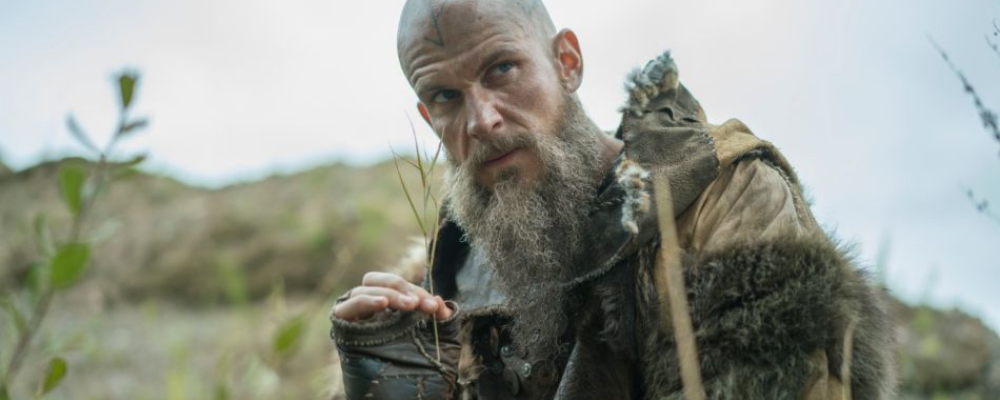
The Vikings were always looking for new lands, and not just because they were adventurers. The Vikings needed more lands to cultivate in order to feed their growing population. This is a line of history that Vikings touches on when it looks at the Viking desire to set up farming settlements in England.
Many Vikings were also looking to escape taxation and increasingly centralized rule to live more freely. This is another storyline dealt with by the show as we see Harald established as the first king of all Norway.
Hearing of the new land, the chieftain Ingolfr Arnarson set up an expedition in 874 that established a more permanent Norse colony hear Reykjavik. Thanks to good land for grazing and farming, the colony was a success.
Despite his protestations, Floki later returned to Iceland with his life Gro and lived there until he died. This is a marked difference between Hrafna-Floki and the Floki on our screens, who begins on his expedition to Iceland following the loss of his beloved wife Helga.
Floki and Erik the Red
One of the main characteristics of Floki’s character on Vikings is his dedication to the old gods. This actually seems to be based on a different Viking explorer, Erik the Red.
Erik the Red founded the first settlement on Greenland in the late 10th century, after being banished from Norway and Iceland in turn for killing his fellow Vikings in fights.
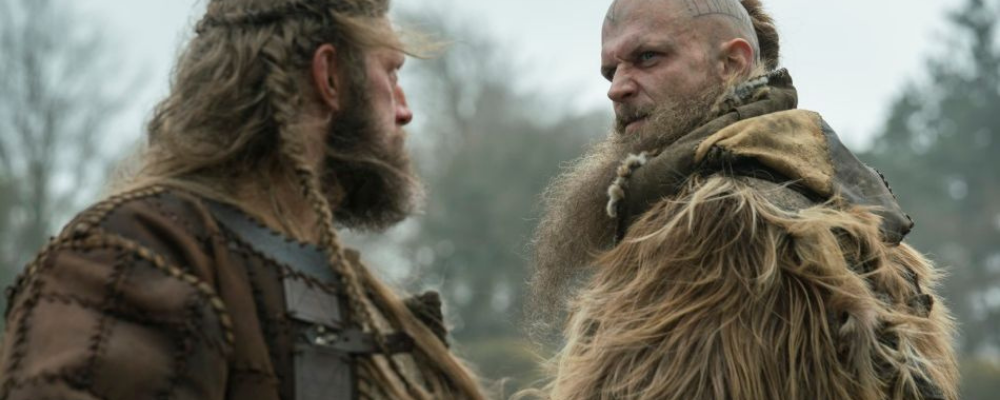
After his period of banishment was over, Erik returned from Greenland to Iceland to find others to colonize Greenland with him. He told many of the riches of his new land, which is in fact a harsh environment. So, when Floki does this on the show, his character is borrowing from Erik’s story.
Floki’s commitment to the old gods may also be a character trait borrowed from Erik. He was a staunch supporter of the old faith and rejected Christianity, despite both his wife and son converting to Christianity and spreading it throughout Greenland.
Floki: Fact of Fiction
While it is clear that Floki is not a faithful representation of any single Viking individual known from the historical record, but rather an amalgam of several, he nevertheless nicely represents and embodies several important themes from Viking history.
The superior technology of the Viking longboats, along with the better weapon and diets, was one of the main reasons that the Vikings were able to dominate their neighbors. The show uses Floki to tell the story of the Viking longships.
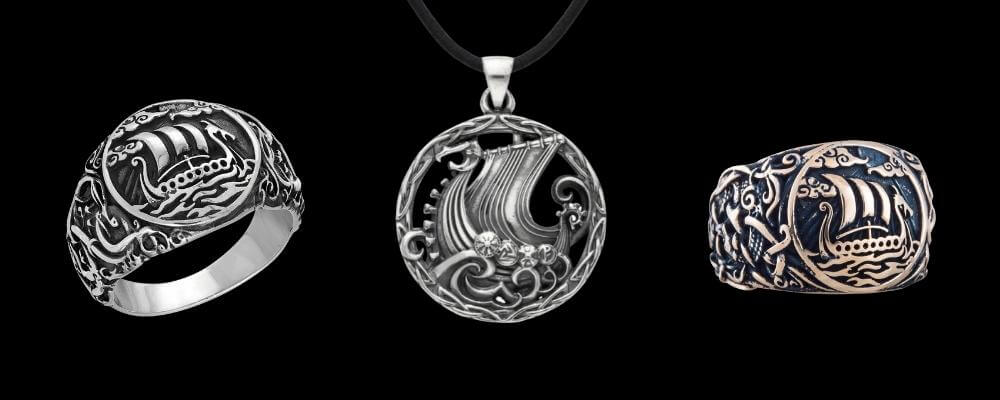
The conflict between the old religion and Christianity was an important part of the history of the day. On the show, we see the curious, such as Ragnar, those who converted to facilitate trade, such as Ubbe, the openminded, such as Lagertha, and those who held on to the old ways and saw the threat posed by Christianity, such as Floki.
Through Floki, we also get a glimpse of the kind of perilous sea journeys that many Vikings went on, which allowed them to discover new lands. With his settlement in Iceland, we get insight into some of the important reasons why the Vikings were willing to leave their homes and gamble everything on new, not necessarily hospitable territory.
So, while the Floki of Vikings may not be from history, he certainly embodies many important themes of the period.
What do you think? Do you think that Floki was used well on Vikings?
